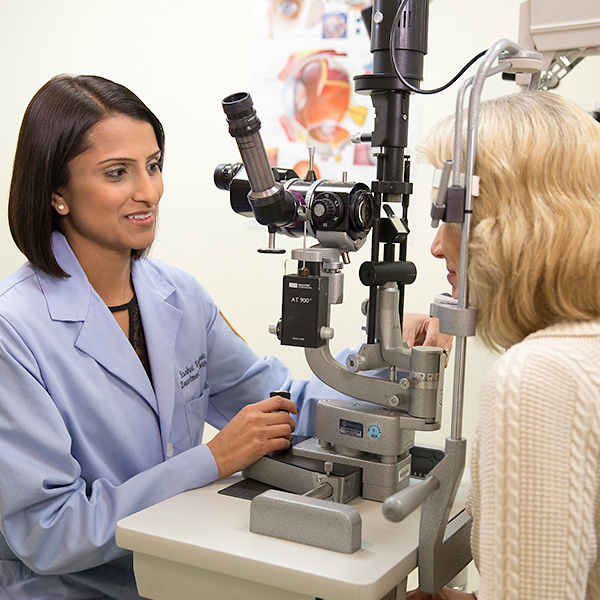Neovascular Glaucoma
Overview and Facts about Neovascular Glaucoma
Neovascular glaucoma is a condition that affects your eyes’ blood vessels and is frequently associated with diabetes. In neovascular glaucoma, the vessels that supply oxygen-rich blood to your eyes are constricted, thereby cutting off the oxygen necessary to function.
Consequently, your body will signal new blood vessels to grow. This process eventually causes new growth to plug the channel that drains the fluids produced by your eye. Blockage can cause fluids to build up and create pressure on the optic nerve; damage to the nerve will eventually lead to vision loss.
Delayed diagnosis or poor management of glaucoma conditions can lead to permanent blindness. Regular visits to an eye doctor can help detect neovascular glaucoma early on, allowing for immediate and aggressive treatment.
Signs and Symptoms of Neovascular Glaucoma
People with glaucoma conditions do not usually exhibit any signs during early stages of the disease. As neovascular glaucoma progresses, however, symptoms appear and are the same regardless of the underlying condition.
Signs and symptoms of neovascular glaucoma include:
- Severe headache
- Nausea or vomiting
- Reduced visual acuity
- Elevated intraocular pressure
- Light sensitivity
Causes and Risk Factors of Neovascular Glaucoma
Neovascular glaucoma is considered a secondary condition because it is caused by another disease. Typically, an ocular disease (one that affects your eyes) or a systemic disease (one that affects your whole body, like diabetes) is responsible for the development of neovascular glaucoma.
Causes of neovascular glaucoma include:
- Diabetic retinopathy
- Central retinal vein occlusion
- Carotid artery obstructive disease
- Intraocular tumor
- Retinal detachment
- Ocular inflammation
- Other ocular diseases
- Giant cell arteritis
- Takayasu disease
- Trauma
Tests and Diagnosis of Neovascular Glaucoma
It is imperative to be aware of the underlying diseases responsible for causing neovascular glaucoma. Once a detailed history is obtained, a comprehensive eye examination is required for early detection of neovascularization.
Gonioscopy is an easy, cost-effective and quick office procedure used for the early detection of new blood vessel growth in the drainage part of the eye.
Treatment and Care for Neovascular Glaucoma
If diagnosed early, neovascular glaucoma is usually treated aggressively. Most treatments involve targeting the underlying cause of neovascular glaucoma and relieving intraocular pressure (pressure inside the eye).
Treatments for elevated intraocular pressure include:
- Drug therapies used to manage inflammation, decrease eye pressure and control pain
- Trabeculectomy, a glaucoma filtration surgery that reduces eye pressure
- Fluid drainage devices that are surgically implanted
- Cyclodestruction, a procedure that reduces pressure in the eye by destroying the parts that produce fluids
- Alcohol injection or enucleation, procedures that are used to manage eye pain in a blind eye

Request an Appointment
Whether you are seeking routine eye care or have a specific vision issue, our team treats a wide range of eye diseases and conditions, including cataracts, glaucoma, macular degeneration and strabismus. Schedule an appointment today.
Schedule a Telehealth Appointment
